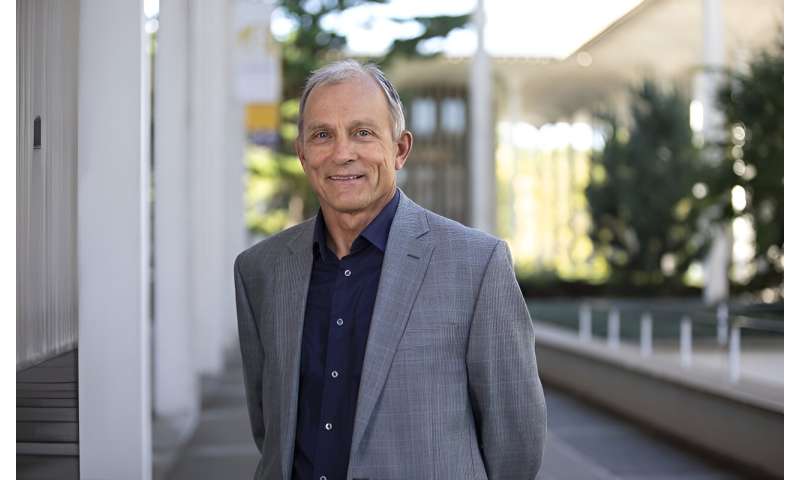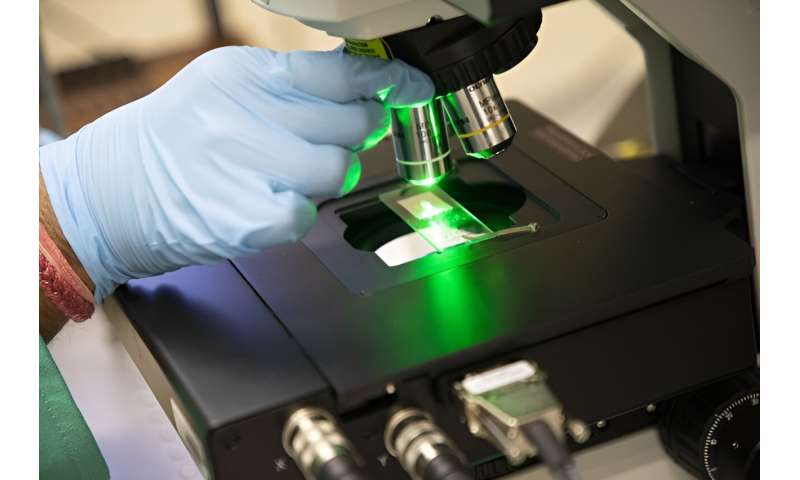UAlbany Chemist Receives $1 Million in Federal Support to Commercialize Forensic Investigation Tool

ALBANY, N.Y. (Oct. 5, 2023)—University at Albany chemist Igor Lednev has spent more than a decade developing a laser-based technology that can help law enforcement catch violent criminals.
Now, through $1 million in support from the National Science Foundation, he's preparing to bring the forensic investigation tool to market.
SupreMEtric LLC, founded by Lednev, has received its second highly competitive NSF Small Business Technology Transfer (STTR) grant. It will be used to advance the commercialization of his novel technology, which combines Raman spectroscopy and advanced statistics to identify body fluid traces at crime scenes.
The two-year NSF STTR Phase II grant adds to $256,000 in support for a Phase I proof-of-concept in 2021. The STTR program funds around 400 companies each year.
"This $1 million grant from the National Science Foundation will provide support for building a working prototype of our technology," said Lednev, a Distinguished Professor in the Department of Chemistry at the College of Arts and Sciences and faculty member at The RNA Institute. "Our tool is the first universal, nondestructive method for identification of body fluids. It was also demonstrated that the method can be used for heavily contaminated samples, biological stains on common substrates and for binary mixtures of different body fluids.
"The new federal support is an important development for modern forensic science because body fluid traces are a main source of DNA evidence for crime scene investigations."
Laser Forensics
The Lednev lab has pioneered the use of Raman spectroscopy, coupled with advanced machine learning methods, for forensic purposes.
Lednev's technique works by shining monochromatic light on a sample and measuring the scattered radiation. (Photo by Patrick Dodson)
Raman spectroscopy is a non-destructive chemical analysis technique that works by shining monochromatic light on a sample and measuring the scattered radiation. No two samples produce the same scattered spectrum, offering a unique measurement (similar to a fingerprint). The results are instantaneous, with the sample preserved for future testing.

Lednev's technology combines this approach with advanced statistics to test body fluid samples—such as blood or saliva. By shining a laser light on the sample, his technology can identify the type of body fluid, determine if it's human or animal in origin, report the estimated time of deposition, and predict key suspect characteristics such as sex, race and age, with close to 100 percent accuracy.
SupreMEtric LLC was founded in 2019 with support from the SUNY Technology Accelerator Fund. Through the start-up company, Lednev is collaborating with Ray Wickenheiser, director of the New York State Police Crime Lab System, along with other practitioners in the field, to turn his technology into a usable product for law enforcement agencies and forensic crime labs.
The STTR Phase II grant will be used to create a working prototype, which can be applied in a crime lab setting. Lednev is also developing a portable instrument, which could be used at the scene of crime, as a next-generation item in its line of company products.
"The first generation of our technology will be integrated with benchtop Raman instruments for applications in crime laboratories, requiring only limited technical knowledge and no sample processing," Lednev said. "The second generation will enable portable instruments for on-site body fluid identification.
"If successful, this technology will directly address the forensic backlog currently plaguing the criminal justice system by greatly increasing testing capabilities for biological stains from crime scenes."
Tech to Market
While much of Lednev's research is focused on the use of Raman spectroscopy for forensic purposes, he's also made advances in medical diagnostics and fundamental biochemistry.
Congressman Tonko (left) recently visited Lednev and his research team to learn more about their work. (Photo by Patrick Dodson)
Last year, Early Alzheimer's Diagnostics LLC, co-founded by Lednev and his son Alex, was also awarded STTR grants by NSF and the National Institutes of Health (NIH). The funding is being used to advance the commercialization of a screening tool that tests saliva and blood for the detection of early and preclinical Alzheimer's disease.
"Receiving these STTR grants would not be possible without strong support from the Innovation & Partnerships Office of SUNY's Research Foundation, along with UAlbany's Division for Research & Economic Development, and Office for Innovation Development and Commercialization," Lednev said. "It's exciting to see our hard work start to come to fruition."
Lednev worked closely on the latest STTR grant proposal with Alexis Weber, a graduate research assistant in the Lednev lab and SupreMEtric LLC's chief operating officer; Kirk Macolini, president of InteliSpark, a hands-on business development consulting firm; Lyza Maron, senior funding strategist at InteliSpark; and Marisia Fikiet, an assistant professor at the University of New Haven and recent UAlbany chemistry graduate.
Provided by University at Albany